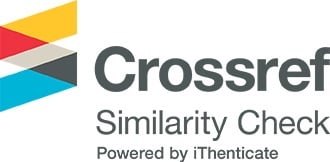Nghiên cứu thành phần hóa học lá cây Bạch đàn chanh (Eucalyptus citriodora)
Các tác giả
DOI: https://doi.org/10.59294/HIUJS.34.2025.747Từ khóa:
Eucalyptus citriodora, Bạch đàn chanh, acid hữu cơ, flavonoidTóm tắt
Đặt vấn đề: Eucalyptus citriodora (Hook.) (Corymbia citriodora (Hook.) K.D.Hill & L.A.S. Johnson) được dùng rộng rãi làm nước hoa, mỹ phẩm và hương liệu. Dịch chiết từ lá bằng nước nóng thường được dùng làm thuốc hạ sốt, chống viêm và giảm đau. Mục tiêu: Phân lập và xác định các thành phần chính từ lá Bạch đàn chanh. Các hợp chất phân lập này được dùng một cách có ý nghĩa nhiều mục đích như nghiên cứu hóa thực vật hoặc kiểm nghiệm dược liệu này hay các chế phẩm của nó. Nguyên liệu và phương pháp: Lá cây Bạch đàn chanh được thu hái từ tỉnh Long An vào tháng 11 năm 2019. Bột lá được chiết xuất bằng ethanol 80% và dung môi được loại bỏ để thu được cao đặc. Sau đó, cao đặc được chiết lỏng - lỏng với n-hexane, chloroform và ethyl acetate (EtOAc). Phân đoạn Ethyl acetate được tiến hành sắc ký cột mở để phân lập hợp chất. Cấu trúc được thực hiện bằng các kỹ thuật quang phổ, bao gồm UV, MS và NMR. Kết quả: Năm hợp chất (1 - 5) đã được phân lập thành công từ cao Ethyl acetate của dịch chiết lá. Cấu trúc của 5 hợp chất được xác định lần lượt là acid trans-ferulic (1), myricetin (2), acid gallic (3), myricitrin (4) và hyperosid (5). Kết luận: Năm hợp chất phân lập thành công từ là Bạch đàn chanh. Các chất phân lập hữu ích trong kiểm nghiệm dược liệu và các chế phẩm liên quan.
Abstract
Background: Eucalyptus citriodora (Hook.) (syn. Corymbia citriodora (Hook.) K.D.Hill & L.A.S. Johnson) has been widely used in perfumery, cosmetics, and fragrance. The hot-water extracts of dried leaves have traditionally been used as antipyretic, anti-inflammatory, and analgesic agents. Objectives: This study aimed to isolate and characterize the main bioactive constituents of Eucalyptus citriodora leaves. These isolated compounds have significant applications in phytochemical studies and quality control of the plant and its preparations. Materials and method: Leaves of Eucalyptus citriodora were collected from Long An province in November 2019. The powdered leaves were extracted with 80% ethanol, and the solvent was removed to yield a concentrated extract. The extract was subsequently fractionated using liquid-liquid extraction with n-hexane, chloroform, and ethyl acetate (EtOAc). The ethyl acetate fractions were subjected to open-column chromatography for compound isolation. Structural elucidation of the isolated compounds was performed using spectroscopic techniques, including UV, MS, and NMR. Results: Five compounds (1-5) were successfully isolated from the ethyl acetate fraction of the leaf extract. The structures of the compounds were elucidated, and identified as trans-ferulic acid (1), myricetin (2), gallic acid (3), myricitrin (4), and hyperoside (5) respectively. Conclusion: Five compounds were successfully isolated from the leaves of Eucalyptus citriodora. The isolated compounds were useful for the quality control of this plant and its relative preparations.
Tài liệu tham khảo
[1] Mỡi L. Đ., Tài nguyên thực vật có tinh dầu ở Việt Nam. Nhà Xuất Bản Nông Nghiệp, 2002.
[2] Chi V. V., Từ điển cây thuốc Việt Nam. NXB Y học, Hà Nội. 2012.
[3] W. Insuan and T. Chahomchuen, "Chemical composition and antimicrobial activity of essential oil extracted from Eucalyptus citriodora leaf," Microbiol. Biotechnol. Lett., vol. 48, no. 2, p. 9, 2020.
DOI: https://doi.org/10.4014/mbl.1912.12016[4] T. D. Tống, X. T. Lê, T. P. N. Nguyễn, and M. T. Lê, "Chưng cất phân đoạn citronellol từ tinh dầu sả java (Cymbopogon winterianus) và tinh dầu bạch đàn chanh (Eucalyptus citriodora)," Tạp chí công thương, vol. 3, p. 8, 2022.
[5] N. T. T. Nhi, H. T. N. Nhung, N. N. T. Trân, and L. T. Hùng, "Xây dựng quy trình định lượng citronellal trong tinh dầu Bạch đàn chanh bằng phương pháp GC-FID (Eucalyptus citriodora Hook)," Tạp chí Y Dược học Cần Thơ, no. 28, pp. 173-179, 2020.
[6] E. Pretsch, P. Bühlmann, C. Affolter, E. Pretsch, P. Bhuhlmann, and C. Affolter, Structure determination of organic compounds. Springer, 2000.
DOI: https://doi.org/10.1007/978-3-662-04201-4[7] S. A. Ralph, J. Ralph, L. Landucci, and L. Landucci, "NMR database of lignin and cell wall model compounds," Forest Products Laboratory: USDA Forest Service, 2004.
[8] C.-C. Shen, Y.-S. Chang, and L.-K. Ho, "Nuclear magnetic resonance studies of 5, 7-dihydroxyflavonoids," Phytochemistry, 1993.
[9] Y. Shen, H. Yang, G. Xia, J. Wang, B. Cai, and X. Jia, "Isolation of gallic acid and methyl gallate from folium Toonea sinensis and validated method for their quantitation using LC-based technologies," Acta Chromatographica, vol. 25, no. 4, pp. 687-701, 2013.
DOI: https://doi.org/10.1556/AChrom.25.2013.4.7[10] I. I. Mahmoud, M. S. Marzouk, F. A. Moharram, M. R. El-Gindi, and A. M. Hassan, "Acylated flavonol glycosides from Eugenia jambolana leaves," Phytochemistry, vol. 58, no. 8, pp. 1239-1244, 2001.
DOI: https://doi.org/10.1016/S0031-9422(01)00365-X[11] E. D. Rodrigues, D. B. da Silva, D. C. R. de Oliveira, and G. V. J. da Silva, "DOSY NMR applied to analysis of flavonoid glycosides from Bidens sulphurea," Magnetic Resonance in Chemistry, vol. 47, no. 12, pp. 1095-1100, 2009.
[12] K. Zduńska, A. Dana, A. Kolodziejczak, H. J. S. p. Rotsztejn, and physiology, "Antioxidant properties of ferulic acid and its possible application," Skin Pharmacology and Physiology, vol. 31, no. 6, pp. 332-336, 2018.
[13] J. Gao, J. Hu, D. Hu, and X. Yang, "A role of gallic acid in oxidative damage diseases: a comprehensive review," Natural Product Communications, vol. 14, no. 8, p. 1934578X198
74174, 2019.
[14] A. Subramanian et al., "Gallic acid: prospects and molecular mechanisms of its anticancer activity," Rsc Advances, vol. 5, no. 45, pp. 35608-35621, 2015.
[15] Y. Qiujian, F. Zongcai, H. Liping, H. Jingwei, Z. Zhongliu, and L. Fang, "Ellagic acid (EA), a tannin was isolated from Eucalyptus citriodora leaves and its anti-inflammatory activity," Medicinal Chemistry Research, vol. 30, no. 12, pp. 2277-2288, 2021/12/01 2021.
[16] M. M. Silva, M. R. Santos, G. Caroço, R. Rocha, G. Justino, and L. Mira, "Structure-antioxidant activity relationships of flavonoids: A re-examination," Free Radical Research, vol. 36, no. 11, pp. 1219-1227, 2002.
DOI: https://doi.org/10.1080/198-1071576021000016472[17] K. L. Wolfe, R. H. J. J. o. a. Liu, and f. chemistry, "Structure− activity relationships of flavonoids in the cellular antioxidant activity assay," Journal of Agricultural and Food Chemistry, vol. 56, no. 18, pp. 8404-8411, 2008.
DOI: https://doi.org/10.1021/jf8013074[18] D. K. Semwal, R. B. Semwal, S. Combrinck, and A. Viljoen, "Myricetin: A dietary molecule with diverse biological activities," Nutrients, vol. 8, no. 2, p. 90, 2016.
DOI: https://doi.org/10.3390/nu8020090[19] H. LIU, Y. LIU, Q. CHEN, S. CAO, and X. QI, "Inhibitory Activity of Flavonoids From Myrica rubra on α- glucosidase," Journal of Nuclear Agricultural Sciences, no. 1, p. 10, 2018.
[20] D. Y. Kim, S. R. Kim, and U. J. Jung, "Myricitrin Ameliorates Hyperglycemia, Glucose Intolerance, Hepatic Steatosis, and Inflammation in High-Fat Diet/Streptozotocin-Induced Diabetic Mice," International Journal of Molecular Sciences, vol. 21, no. 5, p. 1870, 2020.
DOI: https://doi.org/10.3390/ijms21051870[21] I.-W. Hwang, S.-K. J. P. n. Chung, and f. science, "Isolation and identification of myricitrin, an antioxidant flavonoid, from daebong persimmon peel," Preventive Nutrition andFfood science, vol. 23, no. 4, p. 341, 2018.
DOI: https://doi.org/10.3746/pnf.2018.23.4.341[22] Z.-L. Zhou et al., "Flavonoid glycosides and potential antivirus activity of isolated compounds from the leaves of Eucalyptus citriodora," Journal of the Korean Society for Applied Biological Chemistry, vol. 57, pp. 813-817, 2014.
DOI: https://doi.org/10.1007/s13765-014-4264-0[23] A. Raza, X. Xu, H. Sun, J. Tang, and Z. Ouyang, "Pharmacological activities and pharmacokinetic study of hyperoside: A short review," Tropical Journal of Pharmaceutical Research, vol. 16, no. 2, pp. 483-489, 2017.
DOI: https://doi.org/10.4314/tjpr.v16i2.30Tải xuống
Tải xuống: 163











